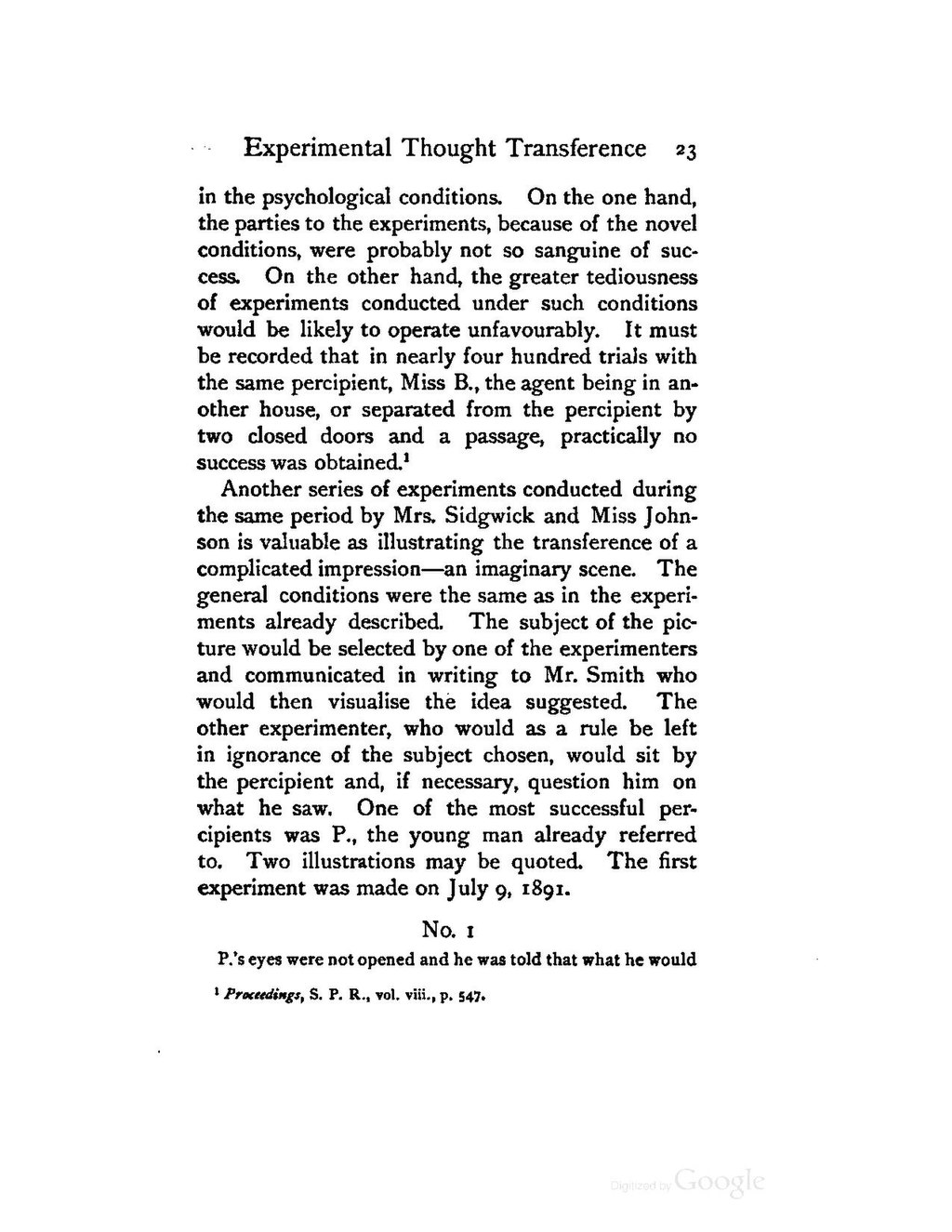in the psychological conditions. On the one hand, the parties to the experiments, because of the novel conditions, were probably not so sanguine of success. On the other hand, the greater tediousness of experiments conducted under such conditions would be likely to operate unfavourably. It must be recorded that in nearly four hundred trials with the same percipient, Miss B., the agent being in another house, or separated from the percipient by two closed doors and a passage, practically no success was obtained.[1]
Another series of experiments conducted during the same period by Mrs. Sidgwick and Miss Johnson is valuable as illustrating the transference of a complicated impression—an imaginary scene. The general conditions were the same as in the experiments already described. The subject of the picture would be selected by one of the experimenters and communicated in writing to Mr. Smith who would then visualise the idea suggested. The other experimenter, who would as a rule be left in ignorance of the subject chosen, would sit by the percipient and, if necessary, question him on what he saw. One of the most successful percipients was P., the young man already referred to. Two illustrations may be quoted. The first experiment was made on July 9, 1891.
No. 1
- ↑ Proceedings, S. P. R., vol. viii. p. 547.
